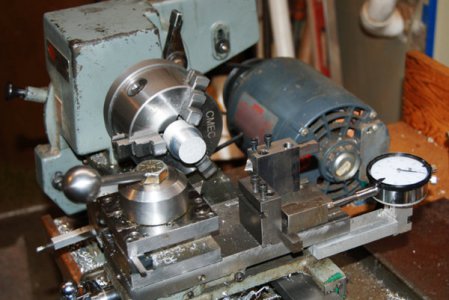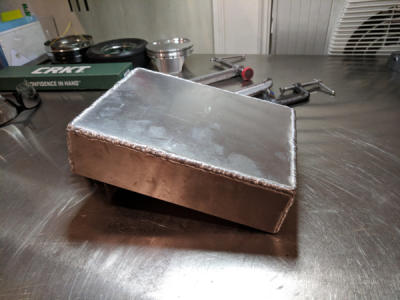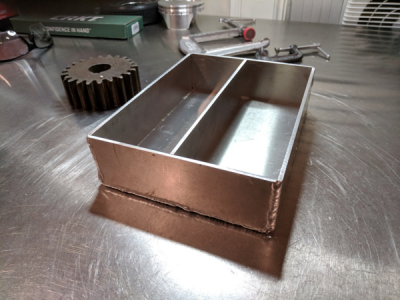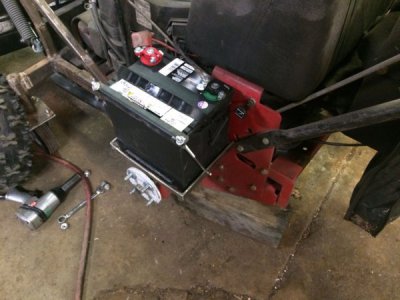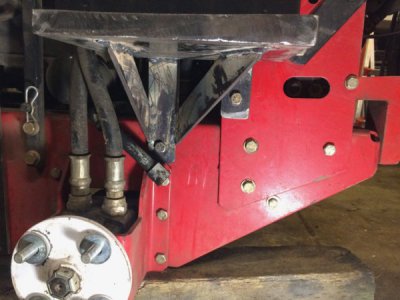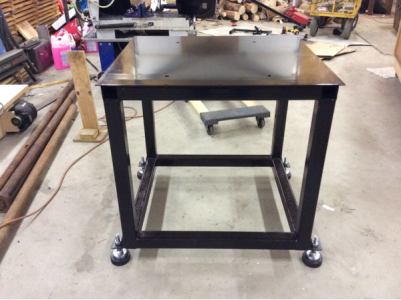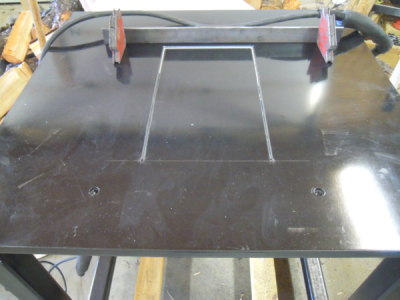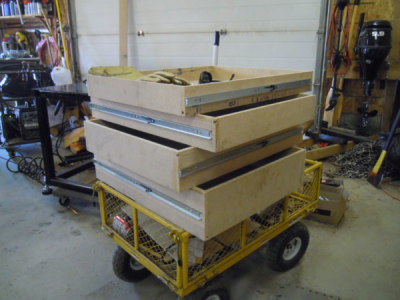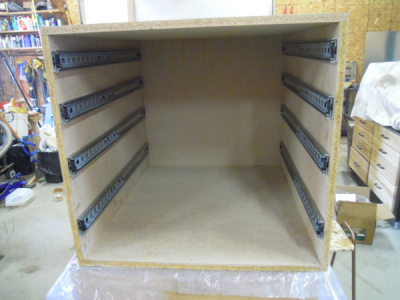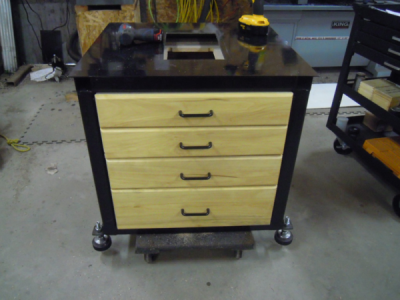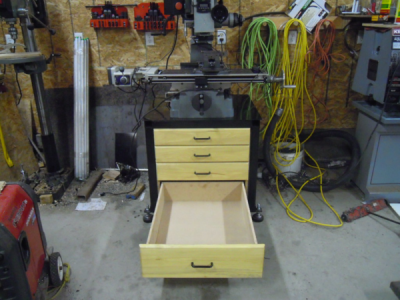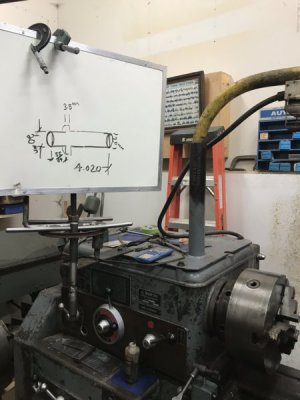I spent most of the day tweaking on the shaper. Over the last while it had developed quit a pronounced "thunk" at the turnaround of each stroke. It's really hard to see inside while the machine is running, but the best I could determine was that there was too much play in the sliding block and it was knocking the sides of the arm on each change of direction.
The original block is bronze with a Torrington needle bearing, but I decided to try a new one out of UHMW instead. Here's the shaper itself trimming the ends of what will become its own new part. The material cuts nice with sharp tools, but there is a tendency for the "chip" to stay adhered at the end of the cut leading to a cluster of little sheep-like spirals on the end of your part. I discovered that a slight chamfer on the edge from a deburring tool reduces this tendency and you get a cleaner cut.
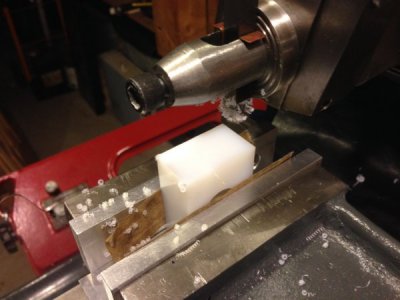
To cut the oil passages I used one of my wood carving chisels, in this case a ninety-degree parting tool. It worked very well, and was almost effortless.
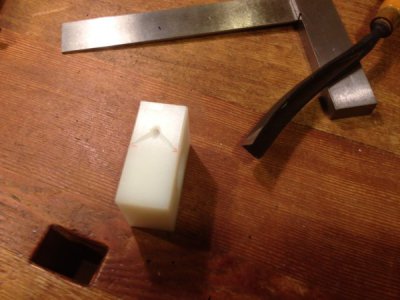
The two pieces side by side. I'm actually quite surprised that the first bronze block has lasted this long, but the little "3" stamped on the face identifies it as original.
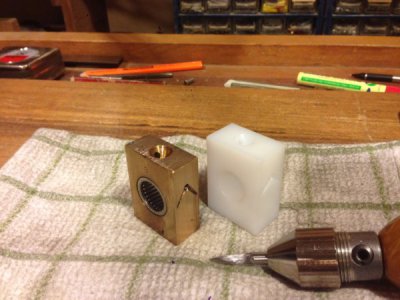
My new block was a nice fit, barely clearance but smooth running on both the sides of the arm as well as the shaft.
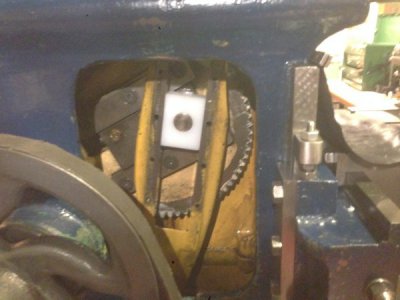
And to hold everything in place, the cover plate gets screwed on with four round-head screws. No uncertainty on where to squirt the oil, eh? I love that old label, hand painted before the use of stickers.
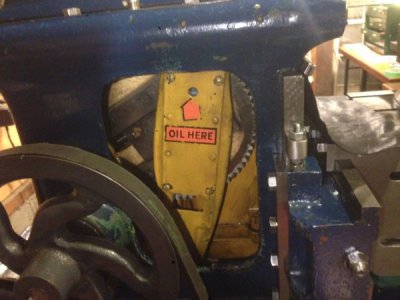
Anyhow, it's all back together and runs smoothly. Still a bit of a thunk that I may have to chase, but not nearly as bad. Thanks for looking!
-frank
